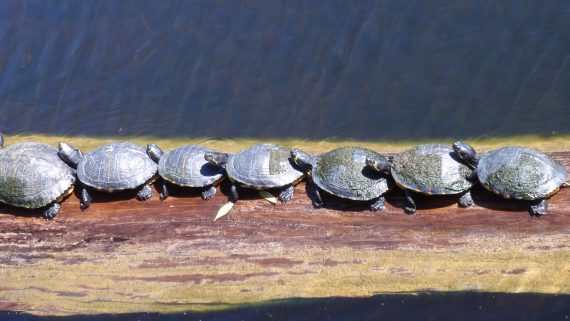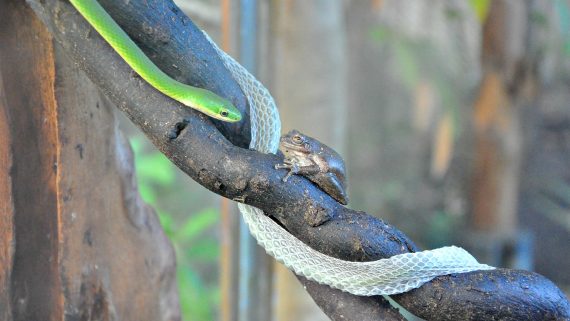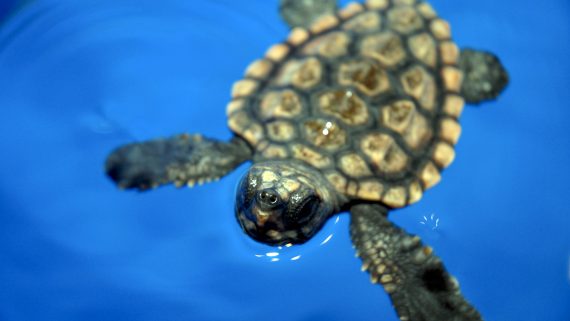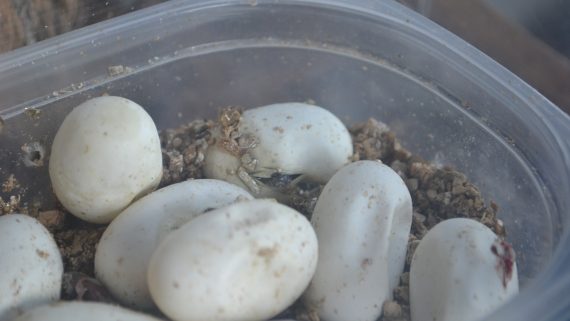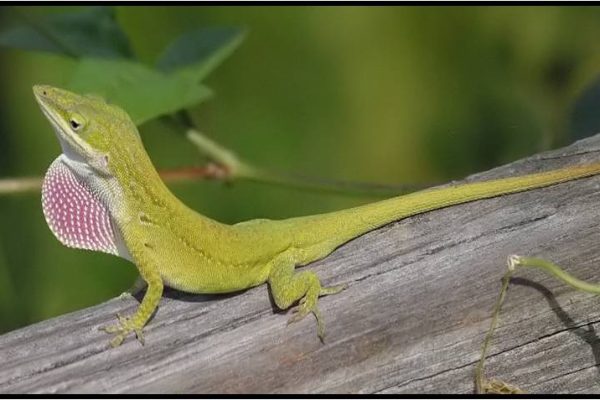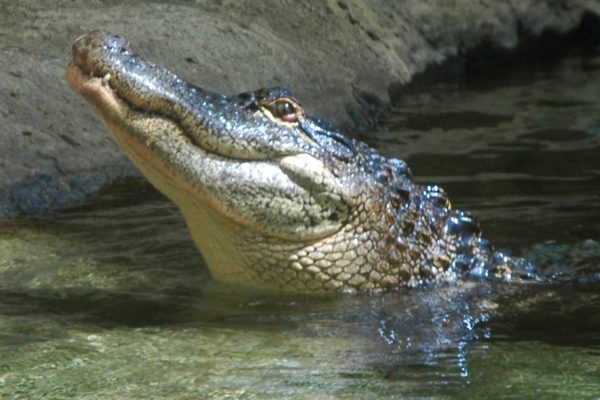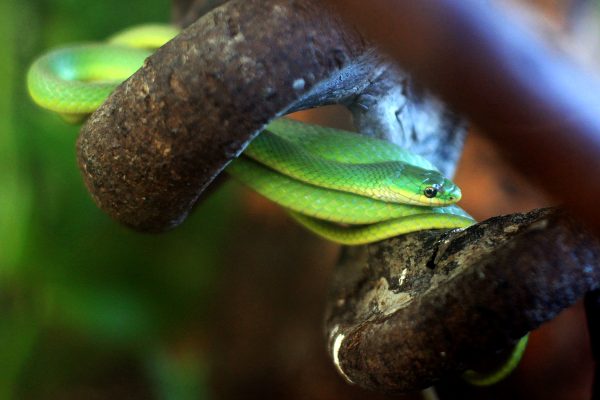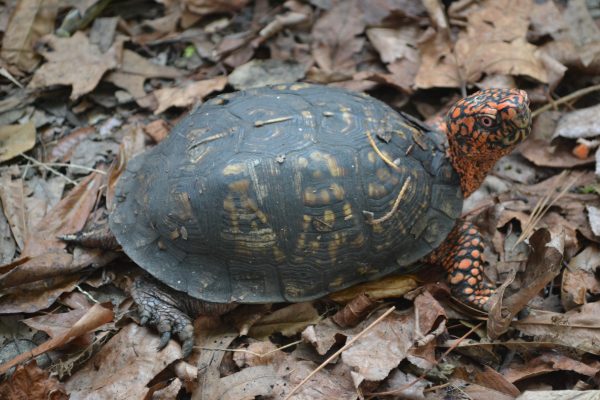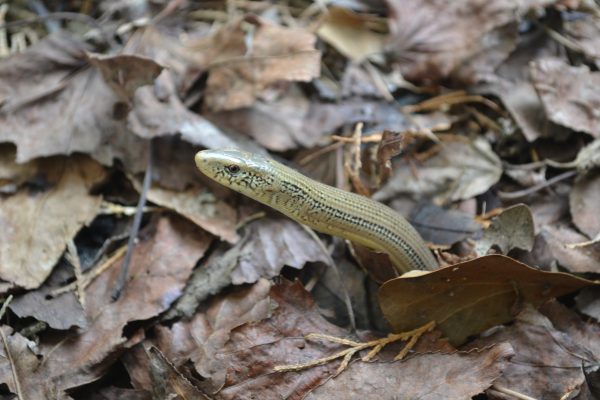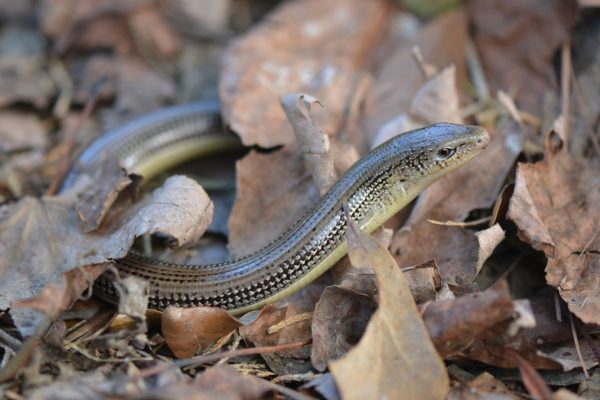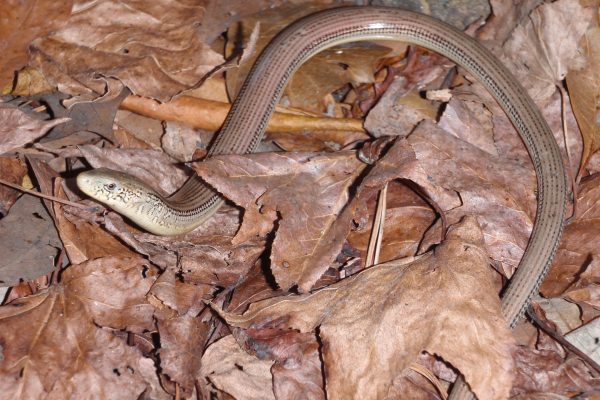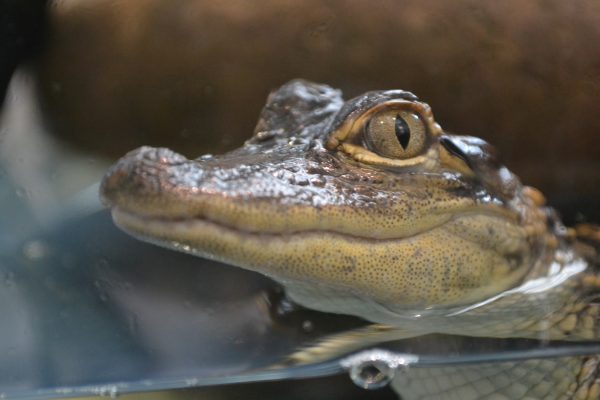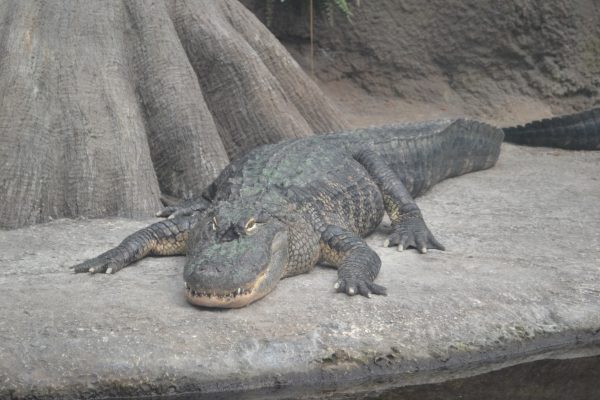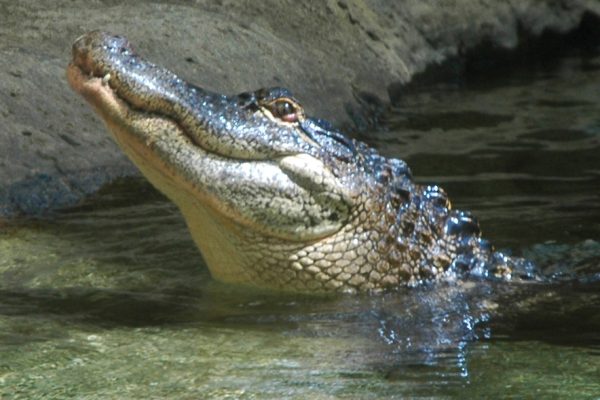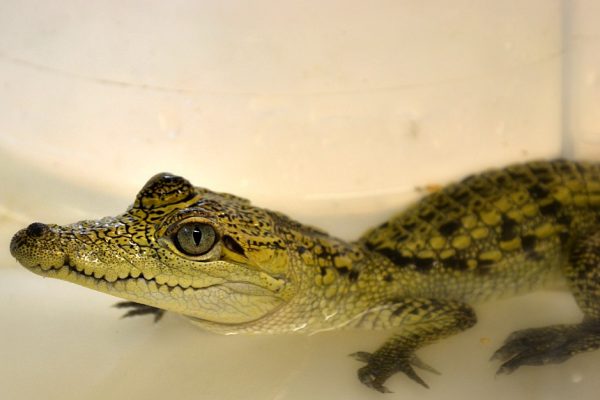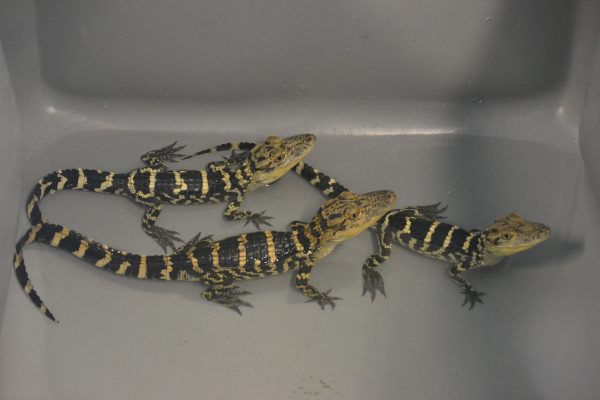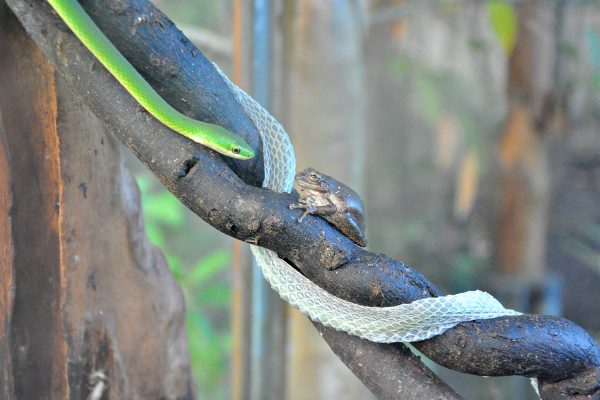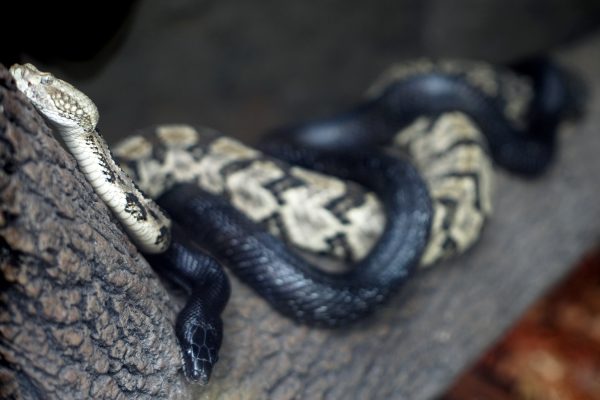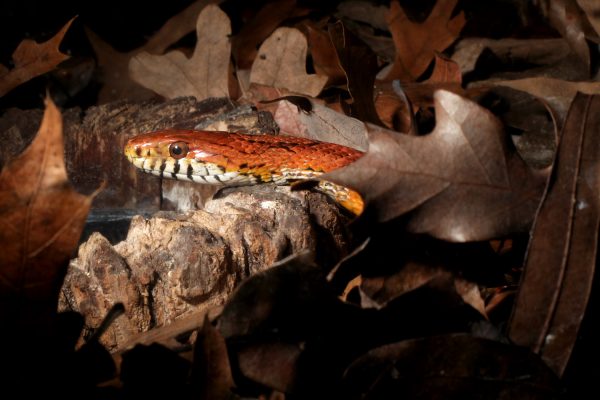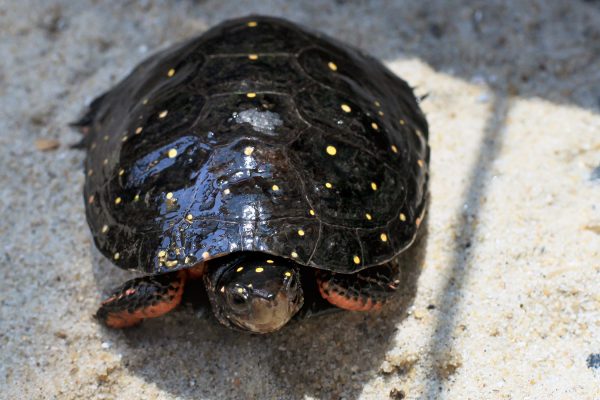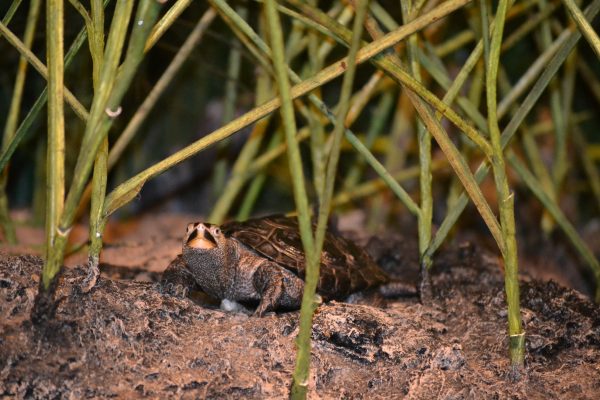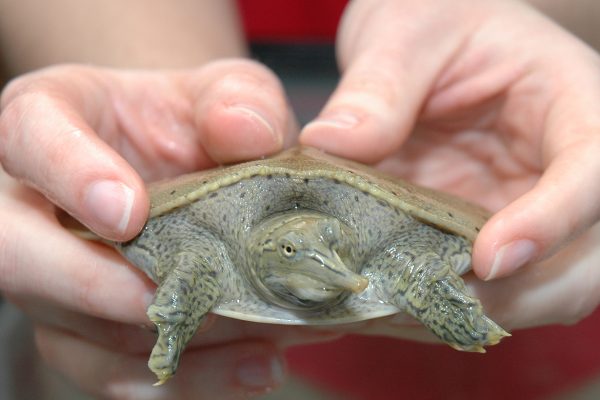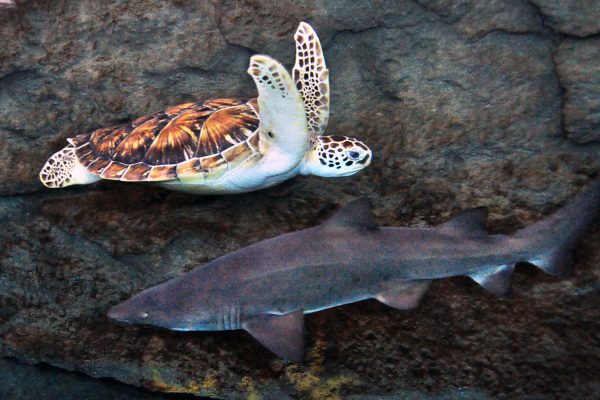All About Reptiles
Reptile Characteristics
Reptiles evolved from primitive amphibians nearly 300 million years ago. Development of a leathery egg shell that allowed embryos to be protected from external pressures while providing food resources and gas exchange was an important adaptation. Reptilian eggs could now be deposited into terrestrial nests and successfully hatched on land. These early reptiles became the first vertebrates (animals with backbones) completely independent of water for reproduction. This adaptation helped the reptiles dominate the Earth on land, in water and in the air for millions of years.
Reptiles are found on every continent except Antarctica. All reptiles share certain characteristics.
All reptiles are ectothermic, meaning they do not produce their own body heat. Instead, their body temperature matches the outside temperature. This is sometimes called “cold-blooded”. They rely on their surroundings to regulate their body temperature. In summer, reptiles swim or nestle under logs or rocks to stay cool. In early spring and fall reptiles frequently sun or bask themselves on tree branches and riverbanks. In the cold months of winter, turtles burrow into the soil or find a warm cozy tree stump and hibernate until spring arrives.
Reptiles must bring their body temperature up to help them digest their food. Because of this, reptiles at the NC Aquarium get fed less frequently in the winter than the summer. The leatherback sea turtle can regulate its body temperature a bit, but not as well as you can. This allows the leatherback to dive deep into the ocean where the water is very cold.
Reptile skin is covered in hard scales. Scales are found covering the fleshy parts of most reptiles. Their scales are similar to fish scales, but are shed periodically as the animal grows. Since their skin is covered in scales, all reptiles must periodically shed their skin as they grow. This also helps to remove parasites.
All reptiles breathe air with lungs (like you do). Sea turtles are able to absorb oxygen dissolved in water through the lining of their mouths or through their cloaca (rectal area). Most reptiles can remain submerged from 20 minutes to 1 hour.
Most reptiles hatch from leathery eggs, but a few snakes and lizards, like the boa constrictor, give birth to live young and do not lay eggs.
Reptile eggs are soft and leathery to protect them from breakage. Some reptiles, such as the boa constrictor, hold the eggs within their body rather than laying them in a nest. Some reptiles, such as alligators, guard their nests whereas others simply lay their eggs and move on. Most turtles lay their eggs and move on but some turtles will lay their eggs in alligator nests so that the alligator will guard their eggs.
Most reptiles have temperature-dependent sex determination, meaning the sex of the hatchling is determined by the temperature of the egg during incubation. In some reptiles, such as turtles, warmer eggs produce females. In others, such as snakes, warmer eggs produce males.

Reptile Groups
The four major groups of reptiles can be remembered using the word LAST: lizards, alligators and crocodiles, snakes, and turtles/tortoises/terrapins (chelonians).
Lizards and snakes evolved from a lizard-like ancestor more than 65 million years ago and are very closely related. In fact, some lizards are more closely related to snakes than they are to other lizards. For instance, an iguana is more closely related to a garter snake than it is to a gecko. Lizards and snakes share many of the same physical characteristics, such as a lower jaw that can easily become disjointed in order to swallow prey larger than its mouth.
Lizards are the most successful reptiles of our time. Their diverse adaptations have allowed lizards to survive in a broad range of habitats. Out of the 3,000 known species, only ten are found in North Carolina.
Most lizards have four legs. Glass lizards, native to North Carolina, are legless. Unlike snakes, lizards shed their skin in sections. Lizards have movable eyelids and visible openings (ear canals) on their heads that lead to an ear. Lizards can be distinguished from snakes by these characteristics.
Some, but not all, lizards can sever their tail at will. This tactic confuses predators and allows for escape. The severed tail wiggles, holding the attention of a would-be predator until an escape can be made. The tail eventually grows back over several weeks.
Many lizards lay eggs in nests made of leaf litter, moist soil or rotting wood. Some species nest in trees. Nests contain 1-20 eggs, depending on the species. The eggs hatch in around 30 days.
Most lizards eat insects or small mammals, but a few are vegetarian. Lizards tend to lie in wait for their meals.
Alligators and crocodiles as a group are called Crocodilians. While there are 23 species of crocodilians found in the world, only two are found in the United States: the American crocodile and the American alligator. Crocodiles are found only in the extreme southern parts of Florida. Alligators range from North Carolina, south to Florida and west into Louisiana and Texas.
Alligators inhabit quiet waters of the coastal plains of North Carolina. Occasionally they are found in brackish or salt water, but they typically prefer the fresh water creeks, ponds and rivers with easily accessible beaches or banks in which to bask. Alligators in North Carolina grow to an average length of 8-12 feet. Those living further south have a longer growing season and may reach a length of 19 feet.
Crocodilians are entirely carnivorous and replace their teeth continuously throughout their lives. Unlike most reptiles, alligator mothers protect their young until they are 2-3 feet long. Hatchlings feed on insects, small mammals and fish. Larger alligators feed on large mammals, snakes and birds.
Alligators are listed as Threatened in North Carolina due to habitat encroachment.
Snakes and lizards evolved from a lizard-like ancestor more than 65 million years ago and are very closely related. Snakes and lizards share many of the same physical characteristics, such as a lower jaw that can easily become disjointed in order to swallow prey larger than its mouth.
Snakes have long tubular bodies. Their vertebrae are loosely locked to remain flexible. This flexibility allows the snake to move in an s-shaped pattern or slither. All species lack limbs, but remnant pelvic and leg bones can be found in some species.
Snakes lack ears and are thought to be deaf. They do have a middle ear bone that connects to their jaw. This connection may allow minute vibrations to be transmitted. Snakes use their forked tongue to gather information about their environment. Inside the roof of their mouth are two holes the tines of the fork fit into. These holes lead to the Jacobsen’s organ, two sac-like structures. When the snake inserts its tongue, molecules from the outside enter the sacks. This is a way the snake can “smell” for prey and predators. Pit vipers, like rattlesnakes, have heat sensors located in pits between their eyes and nose. These pits can sense small amounts of heat emitted by mammals and birds.
Snakes have two distinct layers of scales. The inner layer grows as the snake grows. This layer contains color pigments and will sometimes change as the snake matures. The outer layer is less flexible and must be shed periodically to allow the snake to grow. When the snake is ready to shed, an oily, milky substance is secreted between the scale layers. When it’s time to shed, the snake rubs its head against a rough surface like a rock or stick and crawls out of the outer layer of skin, turning it inside out.
Snakes, like the other reptiles of North Carolina, are declining due to habitat encroachment. They are also killed and collected in great numbers. Some of our venomous species are being considered for status as Threatened, Endangered or Special Concern.
All turtles have shells. Normally a turtle’s shell is formed as the ribs and backbone fuse into bony plates. The exceptions are leatherback sea turtles and spiny soft-shell turtles. They lack the typical bony plates of most turtle shells. Instead, a thick leather-like tissue forms their shells. The top shell is called a carapace. The bottom shell is called a plastron. Some species have 1-2 hinges on their plastron, some lack hinges. These hinges allow for the turtle to pull its head, legs and tail into the shell and close up tight for protection. Shells protect the turtle from predators.
All turtles have beaks similar to birds. They lack teeth, but use their beaks to tear or break-off bits of food. Sea turtles have extremely powerful muscles and can bite through conch shells without difficulty.
Many land turtles, sometimes called tortoises, have high domed carapaces and hinged plastrons so the animal can pull all its vulnerable parts in and close up tight against foxes, raccoons or other predators.
Aquatic turtles have wide flat shells and webbed feet. This adaptation allows aquatic turtles to quickly swim away from their predators. Some species have hinges, others do not.
Sea turtle shells are much flatter than most turtles. This streamlined shape enables them to swim quickly away from sharks or large fishes. Front and hind flippers made especially for swimming significantly increase their speed in water.
Turtles eat a variety of different foods. Their diet depends heavily on what is found in their habitat. Land turtles eat a variety of worms, fruits, vegetables and mushrooms. Aquatic turtles eat fish and a wide variety of invertebrates such as insects and crayfish. Sea turtles eat fish, sponges, crabs and jellyfish among a long list of other marine plants and animals.
Habitat encroachment and development along nesting beaches of North Carolina are decreasing the numbers of turtles found in North Carolina. Plastics and other forms of pollution kill many marine animals each year. Many of turtle species are listed as endangered, threatened or of special concern.

